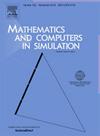PDE models for vegetation biomass and autotoxicity
IF 4.4
2区 数学
Q1 COMPUTER SCIENCE, INTERDISCIPLINARY APPLICATIONS
引用次数: 0
Abstract
Numerical techniques are widely used to simulate population dynamics in space. In vegetation dynamics, these techniques are very useful to investigate how plants grow, compete for resources, and react to environmental factors within the ecosystem. Plant–soil feedback (PSF) refers to the process where plants or a community alter the biotic and abiotic characteristics of soil that affects the growth of plants or community subsequently growing in that soil. During the last three decades, PSF has been recognized as an important driver for the emergence of vegetation patterns. The importance of studying such vegetation patterns is that they provide an insight into potential ecological changes and illustrate the flexibility and resilience of an ecosystem. Despite the fact that water depletion was once thought to be a major factor in the development of vegetation patterns the existence of patterns in ecosystems without water limitations serves as evidence that this is not the case. In this study, we examine how negative plant–soil feedback contributes to the dynamics of plant biomass. We provide a comparison of different reaction–diffusion PDE models explaining the dynamics of plant biomass in the presence of autotoxicity produced by litter decomposition. We introduce different growth terms, including logistic and exponential, along with additional factors such as extra mortality and inhibitor terms, and develop six distinct models to investigate their individual and combined effects on biomass toxicity distribution. By applying appropriate numerical techniques, we solve the proposed reaction–diffusion PDE models in MATLAB to predict the impact of soil toxicity on plant biomass.
植被生物量和自毒性的 PDE 模型
数值技术被广泛用于模拟空间种群动态。在植被动力学中,这些技术对于研究植物如何生长、如何争夺资源以及如何对生态系统中的环境因素做出反应非常有用。植物-土壤反馈(PSF)是指植物或群落改变土壤的生物和非生物特征,从而影响随后在该土壤中生长的植物或群落的生长过程。在过去的三十年中,植物-土壤反馈被认为是植被模式出现的重要驱动力。研究这种植被模式的重要性在于,它们能让人洞察潜在的生态变化,并说明生态系统的灵活性和恢复力。尽管水源枯竭曾被认为是植被模式形成的主要因素,但在没有水源限制的生态系统中也存在植被模式,这证明事实并非如此。在本研究中,我们探讨了植物-土壤负反馈如何促进植物生物量的动态变化。我们对不同的反应-扩散 PDE 模型进行了比较,这些模型解释了在垃圾分解产生自毒性的情况下植物生物量的动态变化。我们引入了不同的生长项(包括对数项和指数项)以及额外的死亡率和抑制剂项等额外因素,并建立了六个不同的模型,以研究它们对生物量毒性分布的单独和综合影响。通过应用适当的数值技术,我们在 MATLAB 中求解了所提出的反应扩散 PDE 模型,从而预测了土壤毒性对植物生物量的影响。
本文章由计算机程序翻译,如有差异,请以英文原文为准。
求助全文
约1分钟内获得全文
求助全文
来源期刊

Mathematics and Computers in Simulation
数学-计算机:跨学科应用
CiteScore
8.90
自引率
4.30%
发文量
335
审稿时长
54 days
期刊介绍:
The aim of the journal is to provide an international forum for the dissemination of up-to-date information in the fields of the mathematics and computers, in particular (but not exclusively) as they apply to the dynamics of systems, their simulation and scientific computation in general. Published material ranges from short, concise research papers to more general tutorial articles.
Mathematics and Computers in Simulation, published monthly, is the official organ of IMACS, the International Association for Mathematics and Computers in Simulation (Formerly AICA). This Association, founded in 1955 and legally incorporated in 1956 is a member of FIACC (the Five International Associations Coordinating Committee), together with IFIP, IFAV, IFORS and IMEKO.
Topics covered by the journal include mathematical tools in:
•The foundations of systems modelling
•Numerical analysis and the development of algorithms for simulation
They also include considerations about computer hardware for simulation and about special software and compilers.
The journal also publishes articles concerned with specific applications of modelling and simulation in science and engineering, with relevant applied mathematics, the general philosophy of systems simulation, and their impact on disciplinary and interdisciplinary research.
The journal includes a Book Review section -- and a "News on IMACS" section that contains a Calendar of future Conferences/Events and other information about the Association.
 求助内容:
求助内容: 应助结果提醒方式:
应助结果提醒方式:


